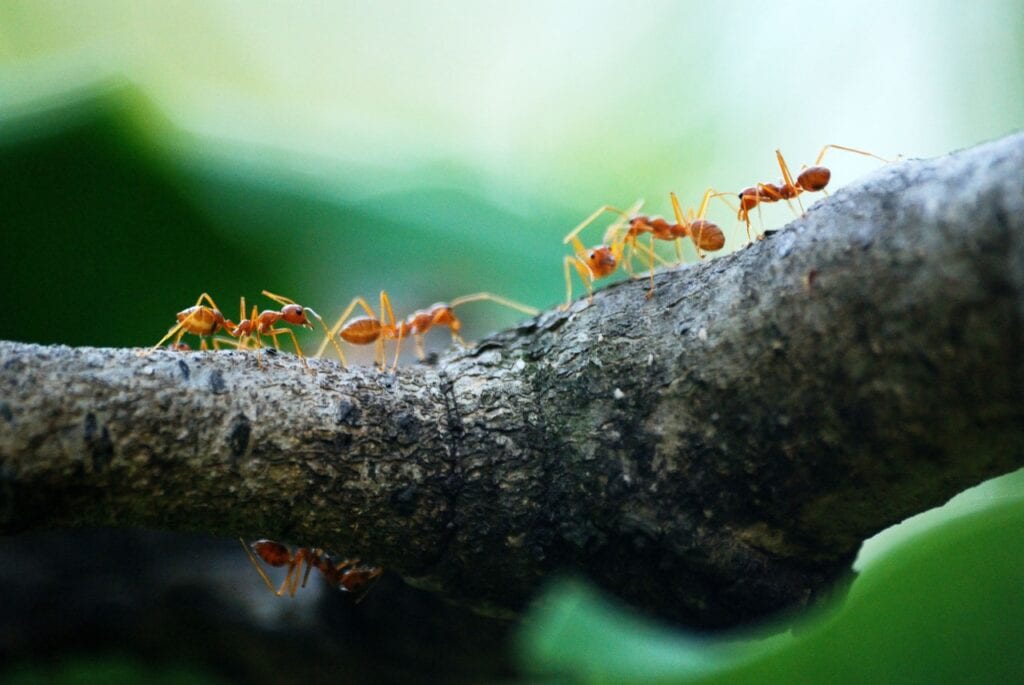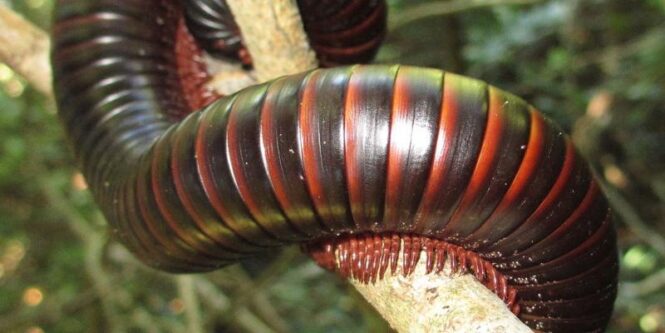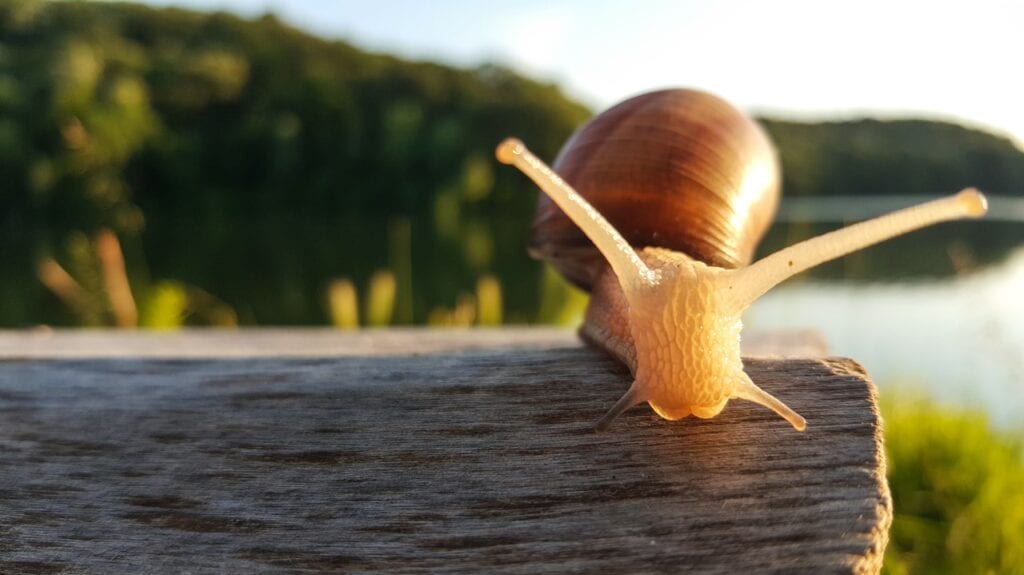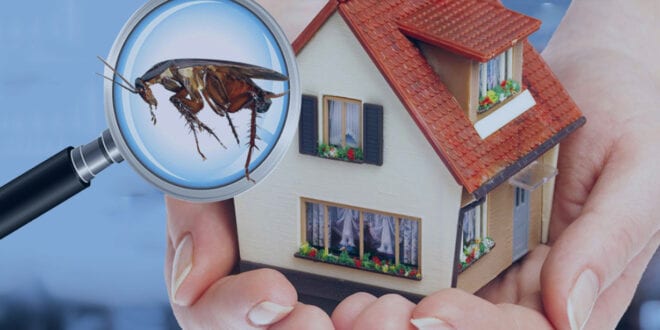In recent years, more people than ever are flocking to Colorado for the scenic outdoors, wide-open spaces, and the booms in job opportunities. As outdoor enthusiasts relocate to backpack the Rocky Mountains and fish the Spinney Mountain reservoir, they’ll need to have an ample supply of insect repellant on-hand before they embark on their outdoor adventures.
Unfortunately, these pests aren’t confined to the mountain ranges and rushing rivers of Colorado’s natural landscapes. Colorado homeowners located in the heart of suburbia are also susceptible to pest infestations that can be a nightmare for those who have recently relocated.
Before you run for the hills as a result of pesky home invaders, check out this resource. To keep your house pest-free, you’ll need to familiarize yourself with native pests and how to get rid of them.
1. Ants

It’s important to clarify that ants are a nuisance across the globe, not just in the Colorado area. Unbeknownst to most homeowners, there are a variety of ant species in the southwestern United States. Colorado is specifically prone to carpenter ants, pavement ants, field ants, and sugar ants.
Regardless of the ant variety, these pests are classified as social insects, which means that they work together in large colonies. When they invade your home or business, you’ll have to deal with large clusters of ants that can contaminate your food and spread bacteria to your loved ones. Left unchecked, these ants will burrow through wood components and compromise the structural integrity of your business or house.
When compared to other household pests, dealing with ants is relatively simple. Start by sterilizing and cleaning your entire house, then fix any existing water leaks. From there, you can lure these pestering ants with ant baits. Once the ants carry these baits to their nest, it will kill the entire ant colony currently infesting your business or home. Typically, these ant foragers will die within a matter of days with the help of ant baits.
2. Cockroaches
Cockroaches often make an appearance in the least desirable rooms in your house, including kitchen and dining areas. These pests breed all-year-round and can aggravate specific allergies or induce an asthma attack. Without employing proper pest control methods, cockroaches can infect your loved ones or contaminate previously sanitary conditions.
The problem with cockroaches is that their eggs aren’t affected by over-the-counter pesticides. One cockroach usually implies the existence of cockroach intrusion. Unlike other common household pests, DIY methods won’t suffice. Exterminating cockroaches should be left to the experts. However, you can do your part them by sealing all openings and cracks around the house. You can also prevent cockroach infestations by properly cleaning cooking and eating areas and by using pesticides regularly.
3. Termites

Termites can cause severe structural damage to your house when left untreated. These pests occupy wood or plant-based materials and munch on wood to extract nutrients and cellulose. When termites can’t gain access to wood structures, termites will settle for books and cabinetry when given the opportunity.
Drywood termites are prevalent in areas of Colorado. This particular termite species sets up camp in your house and consumes wood to survive. To eradicate the presence of terminates, start by removing loose limber. Use specially-formulated liquid pesticides to kill all the termites within your business or home. You’ll also need to use wood treatment chemicals to ensure that termites don’t recurringly invade your property.
4. Rodents
Rodents are a common household pest found in Colorado that, unfortunately, go unnoticed. Most of the time, homeowners only realize they have a rodent problem when it’s too late. Understand that dealing with a large rodent infestation can be somewhat tricky to maneuver.
Fortunately, there are numerous ways to reduce the risk of rodents entering your business or home. In the interest of affordability, baits or traps are the top solutions. Baits ensure that the rat traps are successful and efficient.
To use, set the traps around the basement, attic, or any food sources. You could also employ rodenticides when dealing with a large-scale infestation of rats and mice.
5. Silverfish

Despite their name, Silverfish aren’t a species of fish and don’t resemble the fish in any way. The name is derived from their silver color and how its body moves side-to-side in a fish-like motion.
Planting sticky traps around your house is the best way of getting rid of Silverfish quickly and effectively. If you’d prefer to improvise, a homeowner can use a wet newspaper to trap this pest. The Silverfish will cocoon in the newspaper. Once the silverfish have nestled into the crevices of the newspaper, you can simply crumple the newspaper and throw it away after a few days.
6. Centipedes
Though uncommon, centipedes have been known to infest homes in Colorado. The good news is that centipedes tend to avoid large groups. Because they’re intimidated by human activity, you won’t even notice that centipedes are crawling around your house.
Luckily clearing your home of centipedes is rather easy. Some homeowners may opt-out of the centipede-extermination services provided by their pest control provider. Centipedes are known to feed on more dangerous spiders and insects, keeping you home bug-free.
If a homeowner would still like to prevent centipede invasions, there are steps you can take. For one, reducing clutter will help you eliminate all centipedes within your home. You can also purchase a dehumidifier or seal any gaping cracks in window or doorframes.
7. Millipedes

Millipedes can be a massive nightmare to many homeowners across Colorado. No one wants to stumble across an unsightly millipede as they move about their day. For those insect-fearing homeowners who tremble at the mere thought of a wandering insect, pest control is a must.
One fast-acting pest control solution is killing them on-site by squashing or stomping on a millipede. However, you can always use a vacuum or pest spray if you don’t want to make direct contact with these home invaders. As an extra precaution, ensure that you keep your house dry to avoid millipede invasion.
8. Spiders
Black widow spiders are quite common in Colorado. To identify a black widow, look for a red hourglass marking on their underside. Note that these spiders have a venomous bite, which means that you’ll have to exercise caution.
Spiders love dark and secluded places. Most homeowners will spot spiders of all varieties in corners, dim basements, and garages. The best way to prevent a spider infestation in your house is by reducing clutter. However, if you locate a poisonous spider like a black widow, you’ll need to contact a professional to exterminate black widow spiders in your house, as soon as possible.
9. Snails

Did you know that large snail species can live for up to 10 years? When you disregard the severity of your snail infestation, you may have to confront a large-scale infestation down the road. To avoid these situations, you’ll need to exterminate snails inching their way through your home.
Use natural insect spray to repel snails around your home and backyard. If the infestation is severe, contact a professional to permanently remove all snails from your home or business.
10. Fleas and ticks
Fleas and ticks aren’t restricted to the outdoors. Despite these popular misconceptions, these pests can still travel inside your home. Colorado homeowners experience flea and tick invasions yearly.
To avoid dealing with fleas and ticks, inspect your body for implanted ticks when returning home from outdoor activities like hiking. These pests are commonly labeled as hitchhikers, as they attach to your body and clothes. Once they’ve implanted, you’ll unknowingly carry these pests into your home. Use pesticides to get rid of all fleas and ticks around your home.
Conclusion
Getting rid of pests in Colorado is never as easy as it seems. With this in mind, it’s always best to seek professional help from a certified pest control provider, feel free to visit ridaway.com. If you can’t allocate space in your budget, DIY methods can suffice. Understand that keeping your home clean and clutter-free is among the best ways of avoiding pest infestations in the first place.
 Imagup General Magazine 2024
Imagup General Magazine 2024



